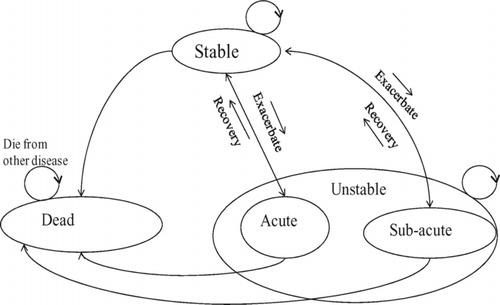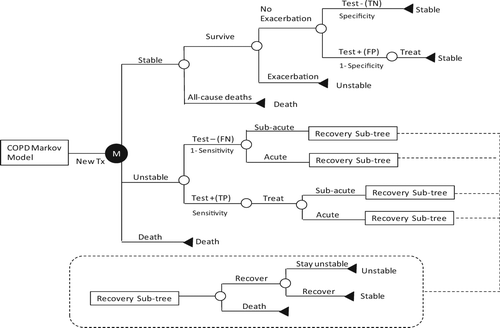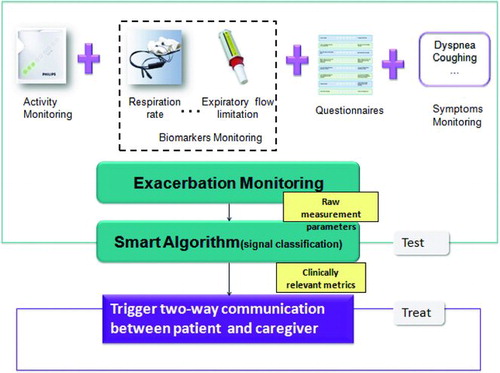Figures & data
Table 1. Definition of the two major components of a home-based COPD exacerbation management program
Table 2. Definition of patient stratification and their source of data assumptions
Figure 2. Markov state diagram to model the recurrent and chronic nature of COPD. Note that only acute exacerbations (AE) leads to hospitalization.

Table 3. Probability Estimate Per Markov Cycle (6 weeks)
Table 4. Cost and utility parameters used in the Markov model
Table 5. Using 6 parameters and 3 scenarios to define the technology efficacy and cost
Figure 3. A simplified scheme to demonstrate the Markov model of the treatment branch. Note that “Test” refers to the home exacerbation detection test and “Treat” refers to the early exacerbation treatment upon the detection of the exacerbation. False Positive (FP) will cause unneeded treatment, thus incur unnecessary cost; False Negative (FN), or missed diagnosis, will omit patients from the early treatment, thus will not reduce admissions but still incur monitoring cost.

Table 6. Simulated impact of home-based exacerbation management
Figure 4. The service pyramid indicates the intensity of services and cost boundary of each risk level patient to be cost-saving to the payers. The table on the right shows the maximum recurring cost (per month) for home-based exacerbation management. If the service cost exceeds this number, payers would incur added costs rather than savings from the exacerbation management program.

Table 7. Break-even service costs for different patient risk groups
Figure 5. Monte Carlo simulation. Left: Cost effectiveness scatter plot. Simulated patients undergoing the usual standard-of-care are shown in blue triangles while patients undergoing the proposed home-based intervention are shown in red crosses. Right: incremental cost-effectiveness scatter plot. Cost saving has been achieved in > 95% of the simulations, and QALY gain has been achieved in 100% of the simulations.

